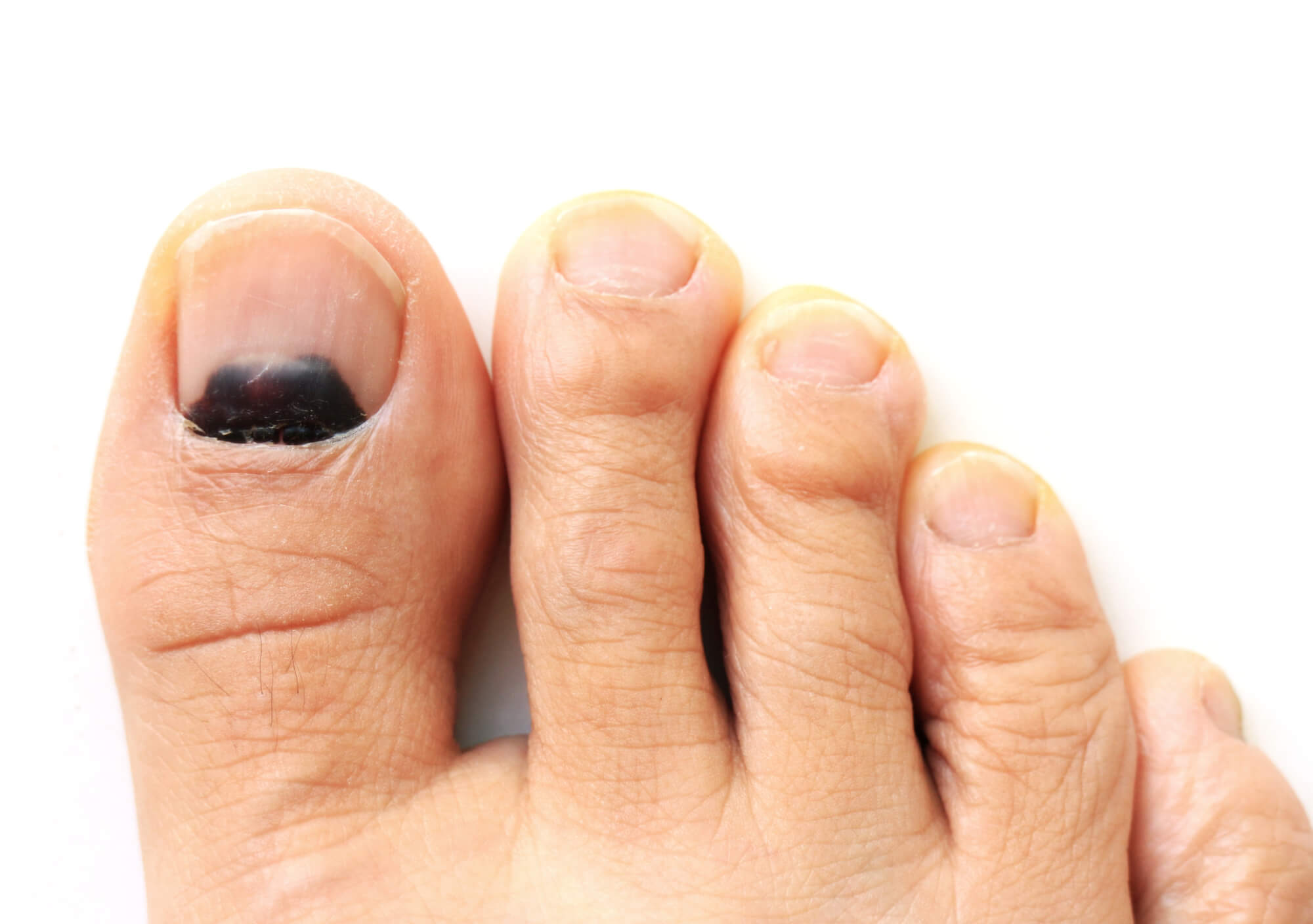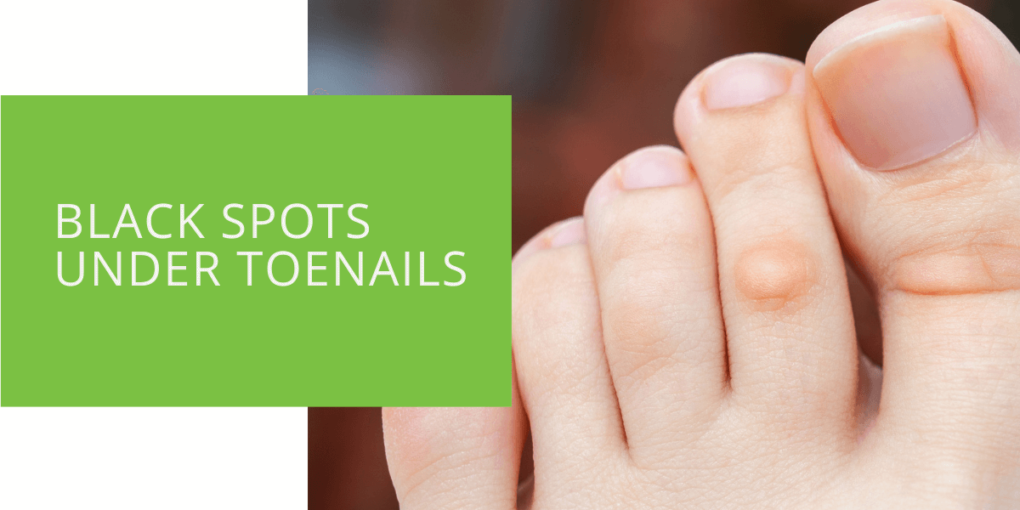Understanding Black Spots Under Toenails
Black spots under toenails can be concerning, often prompting questions about their cause and significance. As podiatrists, we understand the importance of educating individuals on this topic to ensure prompt evaluation and appropriate management. This comprehensive guide delves into the various aspects of black spots under toenails, including their causes, symptoms, and preventive measures.
Key Takeaways
- Black spots under toenails can indicate various underlying conditions, from benign nail fungus to serious issues like subungual melanoma.
- Recognizing symptoms and seeking prompt evaluation from a podiatrist is crucial for accurate diagnosis and appropriate management.
- Practicing good foot hygiene, protecting toenails from trauma, and seeking professional help for any concerning changes are essential for maintaining optimal nail health.
What Are Black Spots Under Toenails?
Black spots under toenails, or subungual melanoma or hematoma, refer to dark discoloration underneath the nail. These spots can vary in size and may appear as small dots or streaks. While some cases of black spots may be benign, others could indicate underlying health issues that require medical attention.
It's essential to note that not all black spots under toenails are harmful. Some may result from minor trauma or temporary discoloration, while others may signify more serious conditions like melanoma. Therefore, it's crucial to distinguish between benign and malignant causes through a thorough evaluation.
Identifying Black Spots: Symptoms and Signs
Recognizing black spots under toenails is essential for early detection and intervention. Symptoms may include:
- Dark discoloration of the nail
- Changes in nail shape or texture
- Pain or discomfort in the nail bed
- Bleeding or discharge from underneath the nail
In addition to visual changes in the nail, individuals may experience physical symptoms such as pain or discomfort. Bleeding or discharge from underneath the nail could indicate the presence of a subungual hematoma or an infection, necessitating further evaluation by a healthcare professional.
Possible Causes of Black Spots Under Toenails
Nail Fungus (Onychomycosis)
Nail fungus, or onychomycosis, is a common culprit behind black spots under toenails. Fungal infections thrive in warm, moist environments, making the toes an ideal breeding ground. When fungi invade the nail bed, they can cause discoloration, thickening, and crumbling of the nail.
Onychomycosis can affect individuals of all ages and is often associated with poor foot hygiene, wearing tight-fitting shoes, or walking barefoot in damp areas like locker rooms or swimming pools. If left untreated, nail fungus can spread to adjacent nails, leading to chronic discomfort or complications.
Subungual Melanoma
Subungual melanoma is a rare but serious form of skin cancer that can develop beneath the toenail. It often presents as a dark spot or streak that gradually expands. Early diagnosis and treatment are crucial for managing melanoma and preventing its spread.
Unlike benign causes of black spots, subungual melanoma requires prompt medical attention due to its potential to metastasize and affect other parts of the body. Individuals with a history of melanoma or prolonged exposure to UV radiation should be particularly vigilant about monitoring changes in their toenails.
Trauma and Injury
Trauma to the toenail, such as stubbing or crushing, can result in bleeding underneath the nail (subungual hematoma), forming black spots. While minor injuries may resolve on their own, severe trauma could cause lasting damage to the nail bed.
Subungual hematomas often occur as a result of acute trauma, such as dropping a heavy object on the toe or accidentally kicking a hard surface. In some cases, the pressure from the accumulated blood beneath the nail may cause discomfort or pain, necessitating drainage to relieve symptoms and prevent complications.
Other Causes
Additional factors that may contribute to black spots under toenails include:
- Prolonged use of dark-colored nail polish
- Underlying medical conditions such as psoriasis or systemic diseases affecting the nail plate
- Medications or chemicals that interfere with nail growth or pigmentation
While less common, these factors can still play a role in developing black spots under toenails. Individuals with psoriasis or compromised immune systems may be more susceptible to nail abnormalities and should monitor their toenails regularly for changes.

Differentiating Between Harmless and Serious Conditions
Distinguishing between benign and malignant causes of black spots under toenails is crucial for appropriate management. While some cases may be resolved with conservative measures, others may require medical intervention. If you notice any concerning changes in your toenails, you must seek prompt evaluation from a podiatrist.
Early detection of potentially serious conditions like subungual melanoma can significantly impact treatment outcomes and prognosis. Therefore, individuals should not ignore persistent or worsening symptoms and seek professional evaluation to rule out underlying health issues.
Prevention and Management
Preventing black spots under toenails involves adopting good foot hygiene practices and minimizing risk factors such as:
- Keeping toenails clean and dry
- Avoiding tight-fitting shoes that can promote fungal growth
- Using antifungal treatments as directed by a healthcare professional
- Protecting toenails from trauma or injury during physical activities
Maintaining proper foot hygiene and wearing breathable footwear can help reduce the risk of nail fungus and other nail-related problems. Additionally, individuals with a history of nail trauma or frequent nail polish use should take precautions to prevent further damage and promote nail health.
Seeking Professional Help
If you have concerns about black spots under your toenails or notice any nail color or texture changes, we encourage you to schedule an appointment with ePodiatrists. Our experienced team can provide thorough evaluation and personalized treatment recommendations to address your concerns. Don't delay seeking help – early intervention is key to preserving nail health and overall well-being.
Conclusion
Black spots under toenails can stem from various causes, ranging from benign conditions like nail fungus to serious issues like subungual melanoma. By understanding the potential causes and symptoms of black spots, individuals can take proactive steps to maintain healthy toenails and seek timely medical attention when needed. At ePodiatrists, we're committed to providing expert care and guidance to help you achieve optimal foot health. Schedule an appointment today and take the first step towards healthier, happier feet.

